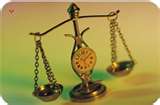“The fellow who says he’ll meet you halfway, usually thinks he is standing on the dividing line.”
– Orlando Batista
Introduction: Welcome to the Mediation Millennium
When young trial attorneys first enter law school, they arrive with dreams of being charismatic lawyers who stride into the courtroom and mesmerize jurors. These students have spent countless hours honing their skills through pre-pre-law tutorial programs like Boston Legal, The Practice, and Ally McBeal. Some want to be the altruistic plaintiff’s counsel who rights wrongs and helps the helpless. Others picture themselves as the silver-tongued defense attorney who can manipulate words like a surgeon uses a scalpel. Everyone has a dream.
These fascinating caricatures born from ‘must see TV’ always win and never compromise. Rarely does Hollywood venture into the land of boring negotiations over the phone or extensive preparation for a major arbitration. For some reason, the mediated settlement agreement has considerably less sex appeal than a hushed courtroom listening to a verdict being read: “We the jury, find in favor of . . . .”
As we all know, the truth is far from John Grisham’s latest novel. The ABA estimates that fewer than 2% of federal cases filed and less than 16% of state court cases filed are actually going to trial (Galanter, 2004). In fact, some estimates suggest a 1% to 2% trial rate overall (Gross & Syverud, 1996; Galanter, 1990). While a portion of these cases are dismissed, the actuality is that settlements are the chief outcome. This has not been a sudden change, but a steady decline in the proportion of jury verdicts over the past 40 years. Interestingly, the field of civil litigation has been surprisingly slow to react and to adjust tactics in the face of this new definition of victory.
People do not like change. People like predictability and doing things as they have always been done. Attorneys are no different. In 2009, most civil cases are very likely to end well before a trial date is ever set. Imagine a sport that has an 84% to 98% chance that every game would end at halftime. Would you coach your players as if the full game was likely to be played? Probably not.
Unfortunately, even though the practice of law has transformed and there is a new definition of winning, the old preparation methods remain the same. Attorneys’ tactics have not significantly altered with the arrival of the mediation millennium. This is a mistake. As the theory of evolution suggests, it is not the strongest that survives, but the one that is the most adaptable to change.
What’s the point if the case will settle?
Why has there been so little change? Many practicing attorneys will say, ‘Why spend time, money, and energy if the case is going to settle?’ Those with this attitude tend to speak about a settlement amount like an agreement that has already been predetermined but has not yet been uncovered. This creates a vision of a stone on which has been carved a dollar value that will somehow be revealed on mediation day.
Settlements are not preordained; they are negotiated. This could be through mediation, arbitration or even simple conversations between attorneys. Much like a trial, the case with the strongest presentation will have the most negotiation power. As a result, effective presentations will translate into significantly more favorable settlement agreements. While it is true that there are upfront costs associated with the development of a strong case presentation, these costs are dwarfed by the potentially favorable movement in the final settlement amount.
This begs the question, how does one create a strong negotiation presentation? The answer is simple: preparation, preparation, preparation. By preparing the case as if the negotiation is as important as the trial, the attorney simultaneously increases negotiating power and completes vital groundwork in the unlikely event that a settlement is not reached.
 How do I prepare?
How do I prepare?
This may seem like a silly question, but it is a necessary one. Too often, attorneys view negotiation preparation as simply determining a realistic settlement amount and knowing the case well-enough to argue in favor of their proposed amount at negotiation. The presentation of the case is a vital component in securing the most favorable settlement possible. Preparations should begin far earlier than mediation and must encompass many strategic aspects of the case.
Witness Work
For some reason, it has become commonplace for witness preparation to begin after a trial date has been set. Deposition preparation often consists of a brief meeting, sometimes only moments before the deposition begins. As a result, there are two unfortunate outcomes:
1. Poor depositions hurt negotiating power by creating new problems within the case. At worst, a witness may give damaging testimony or disclose problematic facts that seriously impede a successful settlement agreement. At best, an unprepared witness may seem nervous and unconvincing. This can give the opposing counsel a sense of false confidence in the value of their case.
2. Even if the witness gives an adequate deposition, an opportunity has been lost. Well-prepared witnesses are intimidating to the other side and suggest both a strong case and skilled opposing counsel. As a result, settlement negotiations will likely be influenced when the other side meets to discuss relative case strengths.
Case Strategy
Telling a powerful story is crucial to any negotiation. Not only must the story convince the mediator or arbitrator of the case’s strength, but it must undermine the other side’s rebuttals. Effective stories take time and effort. As Emerson said, “Put the argument into a concrete shape, into an image, some hard phrase, round and solid as a ball, which they can see, and handle, and carry home with them, and the cause is half won.”
Often, attorneys do not commit the necessary time to create an effective story until the case has moved to the trial phase. As a result, the negotiations are based on a simple exchange of random helpful facts and arguments that are thrown back and forth across a table. This does not present a cohesive story or a powerful case.
Instead, it is most effective to enter the negotiation with a powerful case strategy that will catch an opponent off-guard. While many attorneys worry about showing their hand at mediation, there is a greater than 84% chance that this may be the only opportunity to ever play the cards they have been dealt.
Focus Groups and Mock Trials
A focus group or mock trial provides a test scenario that will help refine the storyline and determine what evidence is most powerful. It will also arm an attorney with data to bring to the negotiation. In the case of mediation, lawyers have the option of revealing focus group or mock trial results to the mediator alone, or showing the results to the other side. Assuming that the outcome was positive, a focus group can be helpful by casting doubt on an opponent’s predictions of likely victory.
Additionally, a mock trial of substantial size can be helpful in understanding the potential value of your case. While there is no guarantee that the results of pre-trial research will mirror an actual jury verdict, it will still produce valuable information when analyzing case values. It may provide a picture as to what some of the dollar parameters are and what would be a fair settlement amount according to jurors in your jurisdiction.
 Video Presentations
Video Presentations
A growing trend in the field of mediation preparation has been the use of professionally created video presentations. We live in a television age that has predisposed us to being moved by potent visuals accompanied by effective soundtracks. Whether it is ‘day in the life’ clips or choice statements from focus group participants, video is a powerful medium to use when making arguments on behalf of your client.
Often, these videos will be interlaced with strong PowerPoint presentations that create multi-modal performances. Imagine how the negotiation dynamic shifts when one side enters the room with a high-tech, polished, and well-organized demonstration of their case and the other side simply has a legal pad with several facts written on it. Of added benefit, videos demonstrate a commitment to the case that will often create alarm in opposing counsel.
Day-of Negotiator
Negotiations can often be tension-filled environments. The culture of civil litigation has created a battlefield between those who typically represent plaintiffs and those who represent defendants. This pressure can sometimes create entrenchment before the sides ever meet to discuss a case. To avoid unnecessary road blocks, the use of a day-of negotiation consultant can add a valuable outside opinion to an attorney’s decision-making process. These consultants are skilled in the art of negotiation and will not be swayed by questionable proclamations or perceived slights in presentations, offers, and counter-offers.
Day-of negotiation consultants can also help adjust client expectations without endangering the attorney-client bond. If clients are present at the mediation, emotions can run high and decision-making can be influenced. Due to a close personal relationship, an attorney may have some difficulty telling his or her client to take an offer that seems like a significant compromise. A negotiation consultant can help to be both a neutral evaluator of the case and a tool for providing reality checks for the client.
What if it doesn’t settle?
If the case does not settle, the prepared attorney is ahead of the game. While opposing counsel is trying to schedule all of his or her groundwork in a much shorter time frame, the prepared attorney is refining strategy. While opposing counsel is attempting to fix poor depositions, the prepared attorney is focused on witness ordering for trial. While the opposing counsel is writing an opening statement, the prepared attorney is practicing his or her overall presentation. In essence, the prepared attorney has the time to truly develop a trial victory while opposing counsel is playing catch up and trying to develop a trial strategy.
Again, remember that trials are occurring in fewer than 16% of all filed cases. The odds are that a case will not move beyond mediation. It is far more likely that all of the hard work and preparation has resulted in a very beneficial settlement. However, if this has not occurred, the prepared attorney is poised for action.
A financial cost-benefit analysis
The idea of spending such a large amount of time and money on a case prior to mediation will likely cause some lawyers to scoff. Upfront costs prior to the negotiation of a settlement are often viewed as wasted expenditures. Why prepare a witness that will never see trial? Why test opening statements in front of a focus group when they will never be utilized in front of a jury? The answers to these questions (and many more) require attorneys to perform honest evaluations of the costs and potential rewards of their cases.
For example, let us assume that an attorney does a little bit of everything that is suggested for preparation. This includes an exploratory focus group, a video presentation and some help with various aspects of witness preparation and negotiation. While much of this may be completed through the use of consultants, other portions could be performed by the lawyer. Let’s assume that the total cost ends up in the neighborhood of $40,000.
While $40,000 is a large number, think of it in the context of a settlement negotiation. Would witness preparation, case strategy development, an exploratory focus group, a professional video presentation and the presence of a negotiation consultant move a $300,000 settlement to $350,000? Would it move a $1.2 million settlement to $1.1 million? The question is not how much money was wasted prior to mediation, but instead, how far the number has moved as a result of effective preparation.
 Conclusion
Conclusion
A recent review of 2,054 civil cases by Kiser, Asher, and McShane (2008) evaluated the decision-making of plaintiff and defense attorneys when choosing whether or not to take a settlement offer. The authors compared settlement offers during negotiations to eventual trial outcomes. The study corroborated what other research has demonstrated, that parties would often have been better off with the settlement than the trial verdict (Gross & Syverud, 1996; Gross & Syverud, 1991; Rachlinski, 1996; Priest & Klein, 1984; Priest, 1985). The research found that plaintiffs would have fared better when accepting the settlement offer in 61.2 percent of the cases and defendants would have gained more in 24.3 percent of the cases. However, even though defendants made the correct decision more often, the magnitude in the dollar values of the defendants’ errors dwarfed that of plaintiffs’ errors. As a function of dollar amounts, both sides should have settled at even higher rates than we already see. This suggests that if attorneys notice the trends, the number of settlements will continue to increase while the number of trials will continue to decline.
Attorneys must adapt to this changing legal landscape. While jury trials will continue, they are no longer the norm and should not be considered likely. As a result, the strategies for representing clients must also change.
The realization that the game will likely end at halftime is a significant tactical advantage over opponents. Those attorneys who adapt and use their skills earlier rather than later will find themselves in stronger bargaining positions. Those who continue to view settlement negotiations as mere pit stops on the path to trials will find themselves facing opponents who are inches from winning the race.
Matt McCusker [Matt@SheldonSinrich.com] is a trial consultant based in Atlanta, Georgia. He does both civil and criminal cases and has worked in venues across the country. He specializes in negotiation, focus group research, jury selection and case strategy. You can read more about Mr. McCusker at his webpage [http://www.SheldonSinrich.com].
References
Emerson, R.W. The Atlantic Monthly, Volume 02, No. 11, September, 1858.
Galanter, M. (2004). The Vanishing Trial: An Examination of Trials and Related Matters in Federal and State Courts. American Bar Association.
Galanter, M. (1990). The Civil Jury as a Regulator of the Litigation Process. University of Chicago Legal Forum.
Gross, S. & Syverud, K. (1996). Don’t try: Civil Jury Verdicts in a System Geared to Settlement. UCLA Law Review, 44, 1-64.
Gross, S. & Syverud, K. (1991). Getting to No: A Study of Settlement Negotiations and the Selection of Cases for Trial. Michigan Law Review, 90, 319.
Kiser, R.L., Asher, M.A. & McShane, B.B . (2008). Let’s Not Make a Deal: An Empirical Study of Decision Making in Unsuccessful Settlement Negotiations. Journal of Empirical Legal Studies, 5, 3, 551–591.
Priest, G.L. & Klein, B. (1984). The Selection of Disputes for Litigation. Journal of Legal Studies, 13, 1.
Priest, G.L. (1985). Reexamining the Selection Hypothesis. Journal of Legal Studies, 14, 215.
Rachlinski, J. (1996). Gains, Losses and the Psychology of Litigation. Southern California Law Review, 70, 113.
Citation for this article: The Jury Expert, 2009, 21(4), 51-55.